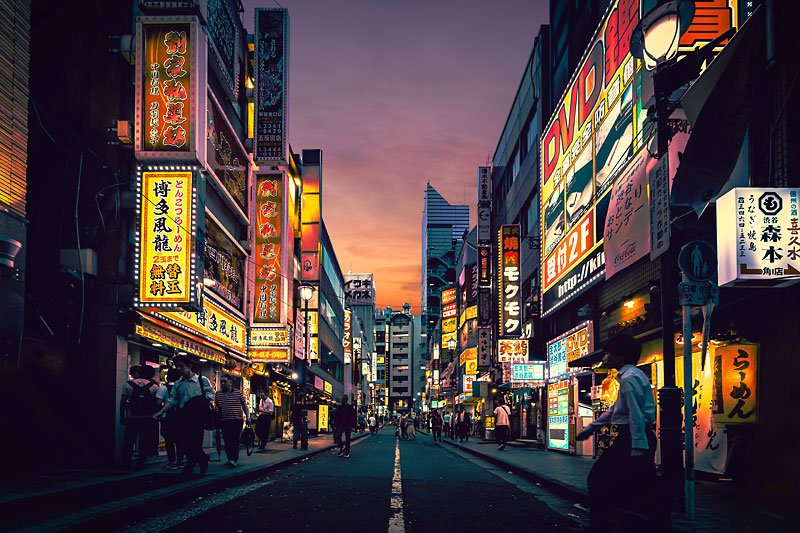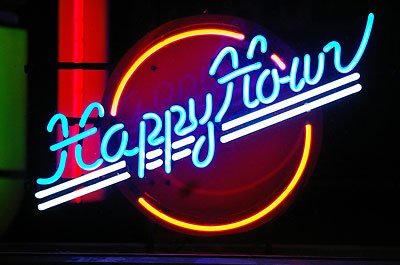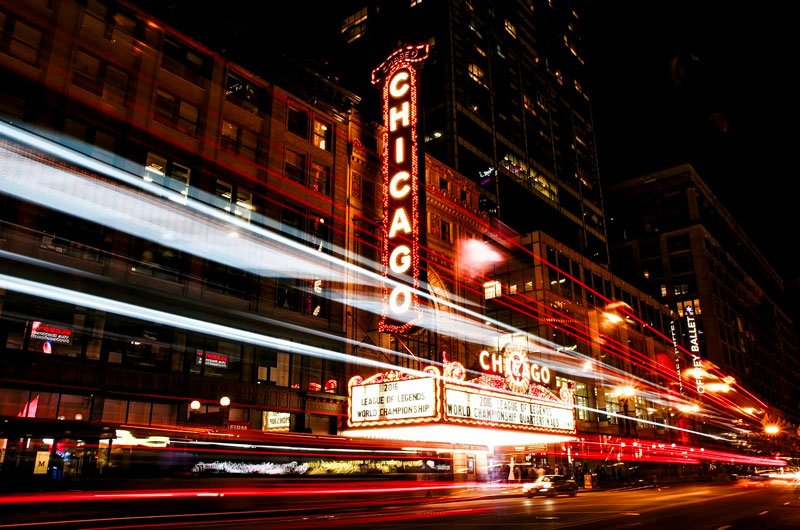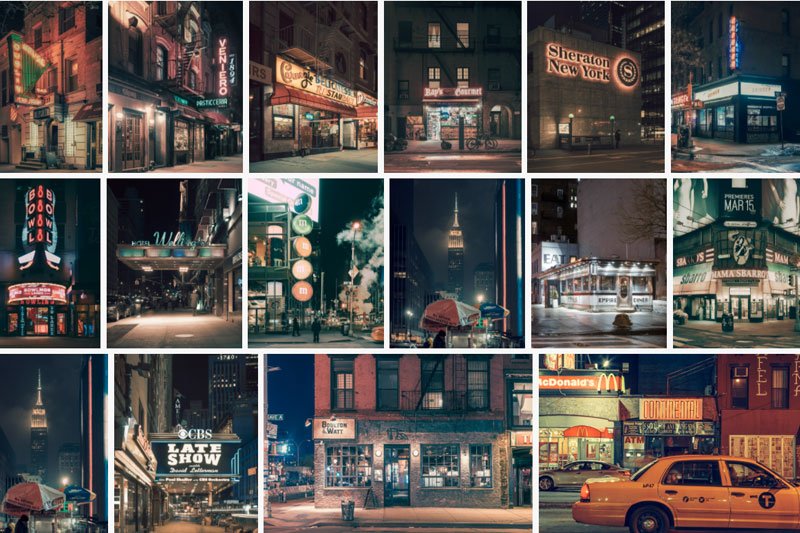Neon Street Photography: Where Color, Light, and Night Collide
Neon photography, you say? Well, if you’re on the hunt for something fresh and exciting to add to your creative repertoire, look no further.
This innovative technique has been taking the world of photography by storm, capturing the hearts and minds of artists and enthusiasts alike. It’s all about embracing the vibrant colors of neon lights, which have a certain nostalgic charm reminiscent of retro cityscapes and futuristic fantasies.

Trust us – once you’ve dipped your toes into the mesmerizing waters of neon photography, there’s no turning back. But what exactly is it that makes this style so captivating?
For starters, it’s a fantastic way to inject some life into your images by playing with different lighting scenarios. By harnessing the power of neon signs and LED lights, you can create an otherworldly atmosphere that transports viewers to a whole new dimension.
And let’s not forget about those incredible reflections that seem to dance across every surface! In short, neon photography is an adventure waiting to happen – a journey filled with brilliant hues and unexpected surprises at every turn.
So buckle up, dear reader: we’re about to venture into the dazzling realm of neon-lit magic!
Key Takeaways
| Neon photography captures the vibrancy of neon lights, creating nostalgic and futuristic images. |
| This style adds life to images by playing with different lighting scenarios and creates an otherworldly atmosphere. |
| Choosing the right location, usually urban night scenes with diverse lighting sources, is critical for creating captivating neon photos. |
| Mastering the balance of ambient and artificial lighting, playing with camera settings such as shutter speed, aperture, and ISO, and adjusting the white balance can help achieve the perfect harmony for neon portraits. |
| Good composition, technique, and an overall vision are essential to create eye-catching neon photos. Experiment with different angles, perspectives, and exposure settings for innovation. |
| Post-production editing, including color grading, adjusting highlights, shadows, and contrast levels, and utilizing layer masks and blending modes in photo editing software, plays a significant role in enhancing the vibrancy and overall mood of neon images. The process provides room for creativity and innovation. |
Choosing The Perfect Location

Is it true that the secret to capturing stunning neon photography lies in finding the perfect location?
As photographers, we often search for innovative ways to elevate our craft, and urban night photography provides an excellent opportunity to experiment with a unique visual element: neon lights.
In this quest for perfection, let’s delve into the importance of choosing the right location for your neon photo shoot.
The heart of neon photography is combining vibrant colors with the contrast of darkness, creating a captivating scene for viewers. To achieve this, consider exploring your city’s nightlife hotspots, where bright signage and illuminated streets invite you to capture the essence of urban night photography.
Look for areas with diverse lighting sources such as billboards, storefronts, and street lamps to create depth in your images. Keep an eye out for reflections in puddles or on glass surfaces that can add an extra layer of complexity and interest.

To truly capture the spirit of innovation in your photographs, don’t shy away from venturing off the beaten path. Explore hidden alleyways and lesser-known streets that may hold hidden gems just waiting to be discovered. Try experimenting with different angles and perspectives – shoot from low down or high up; use wide-angle lenses or telephoto lenses; play around with exposure settings – all these elements will contribute towards capturing that perfect shot.
So when it comes to choosing a location for your neon photography adventure, remember that pushing boundaries and stepping out of your comfort zone can lead you towards creating truly extraordinary images.
Mastering Lighting Techniques

Now that you’ve scouted out the ideal location to capture striking neon-lit images, it’s time to illuminate your creative vision. The next crucial aspect in mastering neon photography is understanding and manipulating light. With the right lighting techniques, you can create a visually stunning world of colors and contrasts that will make your neon portrait photography stand out.
One of the most critical elements in neon light photography is balancing ambient and artificial lighting. To achieve this perfect harmony, first experiment with different camera settings such as shutter speed, aperture, and ISO. A low ISO setting will help reduce noise while allowing for longer exposure times. This enables the vibrant colors of neon signs to pop against darker backgrounds without losing detail in the shadows or overexposing the image.
Also, don’t be afraid to play around with white balance settings – adjusting between warmer or cooler tones can significantly affect the overall mood of your photos. As you continue to explore and innovate within this unique realm of photography, remember that experimenting with angles and perspectives can also bring an extra dimension to your shots. Try shooting from a low angle or incorporating reflections from nearby surfaces like windows or puddles for added depth and interest in your compositions.
By continually pushing yourself to think outside the box, you’ll truly master the art of capturing stunning neon portraits that not only showcase your technical prowess but also reveal an innate ability to see beauty where others may overlook it.
Composing Eye-Catching Shots

Neon photography is like capturing the heartbeat of a city – vibrant, pulsating, and full of life. The magic of neon signs lies in their ability to transform everyday street scenes into works of art, painting the night sky with their mesmerizing glow.
To create eye-catching shots that stand out from the crowd, it’s essential to pay attention to composition, technique, and your overall vision as a photographer.
Street photography is all about catching those fleeting moments that define a city’s urban landscape. When shooting neon signs and city lights, consider the rule of thirds to create balanced compositions that draw the viewer’s eye across the image. Experiment with different angles and perspectives to showcase your subject in an innovative way – shoot from below for a dramatic effect or capture reflections on wet surfaces for added depth.
Don’t be afraid to play with exposure settings to achieve a range of effects – underexposing can help emphasize the glow of neon lights against dark backgrounds while overexposing can create striking silhouettes.

The beauty of neon photography lies in its limitless potential for creativity, allowing you to turn ordinary cityscapes into extraordinary visual stories. Pay close attention to interesting juxtapositions between light and shadow, color contrasts within your frame, and how your subjects interact with their illuminated environment.
Remember that great photos are born from curiosity and experimentation – so push boundaries, take risks, and most importantly have fun exploring the dazzling world of neon-lit city urban photography.
Tips For Post-Production Editing
So, you’ve captured some stunning neon photography shots and it’s time to elevate them even further in post-production editing. Fear not, as we’re here to share some tips that will help you bring out the best in your images while satisfying your inner innovator. Get ready to learn new techniques and create breathtaking visuals that are bound to leave a lasting impression on anyone who lays eyes on them.
When working with neon photography, color grading plays a significant role in enhancing the vibrancy and overall mood of your images. Experimenting with various hues can create vastly different atmospheres – from warm, inviting tones that evoke nostalgia, to cooler shades that transport viewers into futuristic realms. Don’t be afraid to push the boundaries and play with unconventional color combinations; sometimes, the most striking results arise from stepping outside of the box.
Additionally, adjusting highlights, shadows, and contrast levels can further accentuate the dramatic effects of neon lighting while maintaining a balanced composition.
As you dive deeper into post-production editing for your neon photography masterpieces, consider utilizing layer masks and blending modes in your preferred photo editing software. These tools allow you to seamlessly merge multiple exposures or selectively apply adjustments without affecting other parts of your image. This level of control gives you the freedom to fine-tune every aspect of your photo until it perfectly aligns with your creative vision.
Remember – when it comes to innovation in artistry, there are no limits! Embrace curiosity and keep exploring new ways to enhance your neon photography skills through post-production editing techniques. The world is waiting for the incredible visuals you have yet to create!
Inspirational Neon Photographers To Follow
Is it true that neon photography is taking the world by storm? With its vibrant colors, mesmerizing tones, and captivating compositions, it’s no wonder that this innovative art form has captured the hearts of many.
To help fuel your creativity and immerse yourself in this electrifying realm, we’ve compiled a list of inspirational neon photographers you should definitely follow.
First on our list is Brandon Woelfel, a New York-based photographer who has garnered a massive following through his dreamy and enchanting neon photography. His unique style often features whimsical scenes bathed in glowing light, with subjects surrounded by sparklers, fairy lights, or illuminated signs.
Another artist worth mentioning is Liam Wong, who transports us to the cyberpunk streets of Tokyo with his breathtaking images drenched in neon hues. His work perfectly encapsulates the vibrant pulse of the city while showcasing its futuristic atmosphere.
As you delve into the realm of neon street photography, consider Franck Bohbot’s “Light on New York City” for inspiration. Bohbot’s haunting yet captivating images combine the nostalgic glow of neon-lit buildings with modern architecture. His people-less scenes evoke a melancholic solitude, reminiscent of Edward Hopper’s paintings, blending reality with a sentimental artificiality. His work encapsulates the paradox of a city in the throes of modernity yet still anchored in its past. This fusion of old and new, real and surreal, can guide and inspire your journey into neon street photography.
By following these talented artists and their remarkable work you will not only discover new ways to incorporate neon into your own photographic creations but also enrich your appreciation for this dazzling genre.



